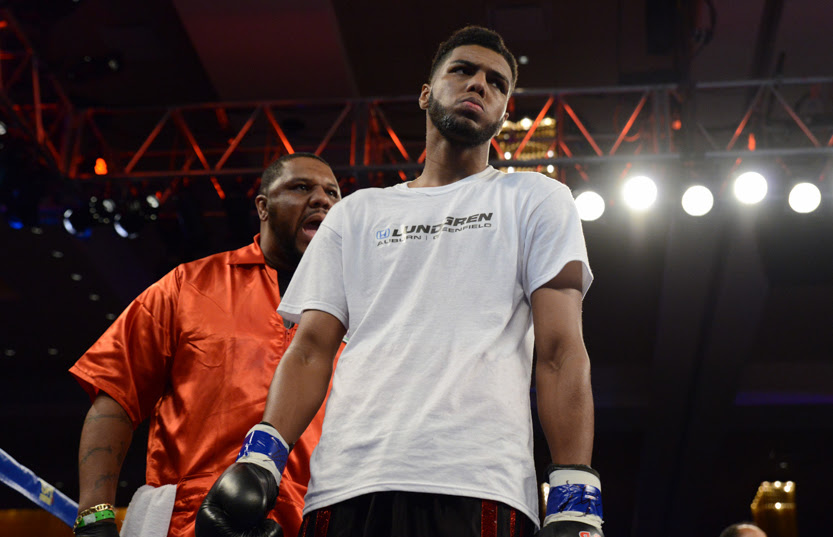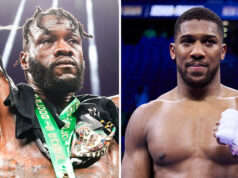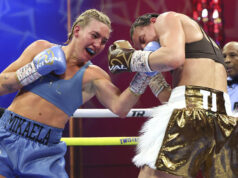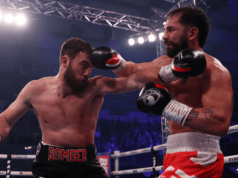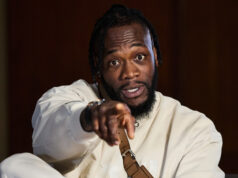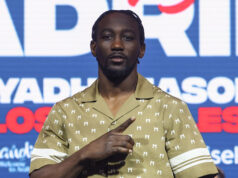There were times when Kendrick Ball was training his son at the gym during his teenage years and not quite getting the feedback he wanted. Bystanders wondered aloud whether or not Kendrick Ball Jr. really wanted to box after all.
“Some of the parents thought I was pushing him too much because it was something I wanted him to do,” Ball said.
Times have changed in Worcester, Mass. Now 24 years old and four fights into his professional career, Ball Jr. (3-0-1, 3 KOs) is every bit the fighter his father hoped and imagined he’d be, a hard-hitting body puncher who adopted his father’s love for boxing as he chases his own championship dreams.
As for the push he gets from his father, that’s the one constant that hasn’t changed a bit.
“In the amateurs, whenever he wanted to fight, I never really pushed him like that,” Ball said, “but now that he’s in the pros, oh, man, I don’t stop pushing.”
Ball Jr. returns Friday, Oct. 16th, 2016 on the undercard of CES Boxing’s 2016 Twin River Fight Series season finale at Twin River Casino in a four-round middleweight bout against Oregon’s Rafael Valencia (3-4-1, 2 KOs), his fifth fight since turning pro in May.
This was Ball’s plan from Day 1, to get his son to become a professional boxer and pick up where he left off in his own amateur career, one in which he captured two Junior Olympic titles as a teenager before devoting his time to training others. The first of Ball’s five children, Ball Jr. took an immediate liking to the sport thanks to that initial push from his father.
“His first gift was boxing gloves,” Ball recalled.
Ball Jr. had the benefit of being able to train at home; his father set up a makeshift gym in the basement, where the younger Ball remembers doing a lot of mitt work at home as a child. They’d also spend time at various gyms training with former Worcester pro Sean Fitzgerald, who’s now a part of Ball’s team, or working out at the Boys & Girls Club, run by the legendary Carlos Garcia.
“It was always fun doing it,” Ball Jr. said, “and then, I don’t know, I guess I just ended up liking it, so I continued to train.”
Once his son got older, Ball figured it was time to test his ability against other fighters, but Ball Jr. was hesitant at first, mainly because he didn’t quite believe in himself.
“I didn’t think I was ready to fight,” he said. “I just kind of fought because I didn’t want people to think I was scared, so I’d just go do it anyway.”
Ball knew he had to pull back the reigns. He had taken his time working his son into the boxing culture and didn’t want to push him at the risk of driving him away.
“When he was younger, he wanted to fight all the time, but I wanted to wait until he got a little older,” Ball said. “When he got older, he was in the gym every day with me because I opened my own gym, but every time I’d say, ‘Let’s go! Let’s fight!’ he was kind of hesitant, but he’d spar with anybody and everybody at the time, bigger guys who were way bigger than him.”
Eventually, Ball Jr. began competing in regional tournaments. He lost his first six fights, admittedly because he didn’t take it seriously or, perhaps, because he jumped in there just to prove to others he wasn’t afraid.
Ultimately, he grew stronger and more confident with each fight. He went on a lengthy winning streak, capturing novice titles at the Rocky Marciano Tournament and the USA Boxing New England Championships, and by the time he reached his senior year of high school, something suddenly clicked.
Around that time, he met Khiary Gray, now his stablemate out of Camp Get Right, who is also trained by his father. By the time they were high school seniors, they were inseparable, and Ball had grown four inches between his freshman and senior years, adding a devastating reach to his attack.
Gray turned pro in 2014 and immediately won his first 13 fights in just under two years, pushing Ball to try to duplicate that success, but his father wasn’t convinced his son was ready just yet.
“Once he saw the results Khiary had, he changed his training at the gym and told me wanted to turn pro,” Ball said, “so I told him, ‘You have to prove a couple of things to me in a couple of fights.’ One of the things was he had to drop a kid in an amateur fight. He fought in the Rocky Marciano Tournament against this kid and I was telling him that, so he came out and dropped the kid. I was like, ‘Oh, shit!'”
Everyone at Camp Get Right knew Ball Jr. had power, but his father helped turn him into an equally devastating body puncher, one of his trademarks as a trainer. After roughly 30 amateur fights, Ball Jr. turned pro in May with a scintillating knockout win over Tunde Odumosu just 1 minute, 39 seconds into the opening round. Each of his three wins have come by knockout with only Bruno Dias making it out of the first round.
Having sparred so much with fellow pros such as former world-title challenger Edwin Rodriguez and fellow amateur standout Owen Minor, Ball Jr. developed a pro style that limited him in the amateurs, but has helped him enjoy early success as a pro, especially with the attack to the body, which finished Dias in July at the 1:56 mark of the second mark.
“I focus a lot on the body with my fighters,” Ball said. “My son goes to the body really, really well. He has a long reach. I’d like him to use his reach more, but he likes to bang. If he gets into a fight where someone hits him hard or whatever, it’s going to be a war. He’s going to go toe-to-toe with you.”
Father-son relationships have been prevalent in boxing for decades. Some work, some don’t. Providence’s Roland Estrada trained his son, Jason Estrada, throughout his entire career, including his run to the Olympics in 2004 and continuing during the younger Estrada’s quest for a heavyweight world title. The late Hector Camacho Sr. enjoyed a prolific career as a three-time world champion, but rarely worked with own son, Hector Camacho Jr., who has fought 66 times as a pro.
Ball’s emphasis on commitment and respect has rubbed off on his son, a soft-spoken, 6-foot-3 gentle giant who has already won over his promoter, Jimmy Burchfield Sr., who says Ball Jr. always sends him a text the morning after each fight thanking him for the opportunity. More importantly, Ball Jr. has grown receptive to his father’s criticism and praise, which isn’t always the case in the father-son dynamic.
“He’s at the age now where he’s a grown man, so he thinks he knows everything,” Ball said. “I’m constantly on him, trying to correct things, and he just thinks I’m on his ass, but like I told him before, ‘If you turn pro, it’s serious.’ There’s no half-stepping. You can get hurt in this sport. He knows I’m on him because I want the best out of him like I do with any of my fighters, so he understands.
“It works,” Ball Jr. says, “because I trust what he’s going to say and he’s always the one trying to tell me what to do and how to do things.”
They’ve become a near unstoppable duo; Ball’s success with Gray has earned him a reputation as one of the area’s up-and-coming trainers, and now he has his son, whose only blemish was a four-round majority draw against previously unbeaten David Wilson, a fight he agreed to on just seven days’ notice following his win over Dias.
After recently re-signing with CES Boxing, keeping him a part of the team for the foreseeable future, the sky’s the limit for Ball Jr., who’s become a rising star in New England on his own terms.
“It’s been a long time coming. It was a goal he set as a young kid,” Ball said. “He has this book he did when he was in the third or fourth grade and he talked about how he wanted to be a pro fighter.
“It’s funny when we go back and read those things. I knew it was going to happen. I just didn’t want to push him into it. I wanted him to be able to do it.”


